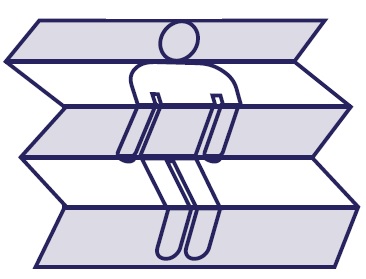Lesson plan – printable download [PDF]
Navigate to…
Lesson 1 – You’re the Judges!”
Introduce I’m an Engineer.
Choose and rank criteria by which to judge the engineers.
Lesson objectives:
Consider a range of criteria. Understand that different (important) values may need to be weighed against each other.
Develop a sense of democracy and how to decide how to cast a vote.
Discuss different viewpoints. Understand that different values may be important to different people in the class.
Curriculum links:
Working scientifically – consider ethical, social and practical aspects of science.
Promotes democracy and SMSC development.
Resources:
- Access to the I’m a Engineer website
- Criteria for judging the engineers: Either the interactive drag and drop list, or the criteria cards for printing
You can access these from the teacher resources page ❯Starter: 5 minutes
Briefly explain the I’m an Engineer activity. You may find the introducing the activity to students section helpful, as well as displaying the website.
Students have the power to decide who wins £500. What ideas do they have about engineering at the moment? Will they change?
Activity: 30 minutes
- Display the criteria list.
Use the interactive drag and drop list, or print the cards for students to use in groups.
You can access these from the teacher resources page ❯- Get the class to select the most important criteria and write these on the board.
- Get the class to rank the five most important criteria – save this list for next lesson.
Plenary: 15 minutes
Mindmap any other criteria that aren’t on the list, but that students might consider important when judging engineers.
Overall message: this will help you judge the engineers as engineers.
Suggested Homework:
- Provide students with the registration link, or with their username and password
- Students log in to iaeuk.ddev.site and set up their profile.
- Students read some engineers’ profiles. How does each person perform based on their criteria from today’s lesson?
Extension:
If they have questions for the engineers, they can post these in ASK.
Support:
Less justification necessary. Lead students into the rationale behind their decisions
Extend:
Ensure students give full justifications and explanations whenever they express an opinion
Lesson 2 — Meet the Engineers
Engineering speed-dating. A fun, exciting way to ‘meet’ the engineers
Lesson objectives:
Get to know engineers and realise they are normal people!
Consider some questions students may want to ask the engineers.
Broaden the students’ perceptions of engineers and contribute to their science capital. Find out more at imascientist.org.uk/science-capital.
Curriculum links:
Select, organise and present scientific information.
Evaluate scientific information and make informed judgements from it.
Resources:
- List of the top five criteria chosen in Lesson 1: You’re the Judges!
- Suggested Questions can be found below or printed from the teacher resources page ❯
- Printed copies of the engineers’ profiles who have signed up to your live chat (see these on your dashboard)
- Paper and pens for drawing an engineer.
Starter: 10 minutes
- Split students into groups – one group for each engineer whose profile has been printed.
- Ask them to think about what they imagine engineers are like. Draw a engineer as a group. Starting at the top of the piece of paper, each person draws a different part of the engineer (head, shoulders, etc) without others seeing. They fold over what they have done and pass it on (like a game of consequences).
- Unfold and look at the pictures – are there any common themes? Do they think engineers are really like that?
Activity: 30 minutes
- Assign each group an engineer and hand them a print out of the engineer’s profile. Get each group to read out their engineer’s name and job role.
- Remind the students of the five most important criteria they chose in Lesson 1: You’re the Judges!
- Get the students to read through their engineer’s profile as a group.
- Split each group in half, into A’s and B’s, for engineering speed-dating. Those in Group A are students who will go around and question Group B, who are the engineers. Group B will use the printed engineer profile pages on which to base their answers.
- Hand the Group A students the list of Suggested Questions to ask the Group B engineers. They can also ask questions of their own. If the answer is not available on the engineer profile the group can speculate.
- The Group B engineers will stay seated and the Group A students will rotate between each engineer, asking questions. Move students on to a new engineer every few minutes.
Plenary: 10 minutes
Go over the questions for each engineer and discuss the engineers as a class. Did students feel they got to know the engineers? What are their opinions of each person? What would they like to ask the engineers? Now may be a good opportunity to draft some questions for Ask and Chat.
Suggested Homework:
Log in to iaeuk.ddev.site and post at least one question in Ask.
Extension:
Read some of the other questions and answers on the site. Who do you think should win? Cast your vote (you can change it later if you change your mind).
Support:
Do the activity as a class with the ‘engineers’ at the front. Two or three students play each engineer.
Extend:
Students ask their own questions rather than Suggested Questions to the ‘engineers’. Go onto the site and submit some questions in Ask for the real engineers.
Lesson 2 – Meet the Engineers (alternative version)
If students have access to computers, this version of Lesson 2 allows for more independent learning.
Lesson objectives:
Get to know engineers and realise they are normal people!
Explore the site and interact with real engineers using Ask.
Broaden the students’ perceptions of engineers and support students’ science capital.
Curriculum links:
Select, organise and present scientific information.
Evaluate scientific information and make informed judgements from it.
Resources:
- ICT suite or a computer and projector in the classroom, so students can work together with the teacher leading.
Starter: 10 minutes
Recap the I’m an Engineer activity – reading profiles, posting questions in Ask, live Chat and Voting.
Or use ‘fold game’ starter from the engineering speed-dating version of Lesson 2.
Activity: 35 minutes
- In pairs, mindmap suitable questions students want to ask the engineers. Discuss them as a class.
- Send students to imanegineer.org.uk to log in (independently or in pairs). Read the profiles of the engineers who have signed up for your live chat. Find them on your dashboard.
- Write down three interesting things from the profiles.
- Post a question in Ask.
- Read some of the other questions and answers on the site. Who do students think should win? Cast votes (students can change their vote later if they change their mind).
Plenary: 5 minutes
Students present to the class:
- Three interesting things they found out on the profiles
- Which engineer they want to win and why
- Who they would not vote for and why
- Are the engineers as the students expected? If not, how are they different?
Suggested Homework:
Pick one of the engineers. Find out about their area of engineer and write about it, including:
- What they study
- Where they do their research
- A famous engineer from the area they study
Extension:
Continue reading the questions and answers already on the site. Comment or post more questions in Ask. If students change their mind about who they want to win, change their vote.
Support:
Give more assistance in thinking up questions. Use the criteria from Lesson 1 and Suggested Questions from Lesson 2 as a basis.
Extend:
Allow more freedom when looking at the site. Write a short paragraph about what they find on the site to present back to the class. Justify more clearly which engineer they like best.
Suggested Questions
1. What kind of place do you work?
2. What do you do?
3. What’s your favourite band?
4. Do you work alone or as part of a team?
5. How long have you done your job?
6. What is your research trying to find out?
7. Will your research affect people? If so how many people and in what way?
These Suggested Questions are also available to download and print on the teacher resources page ❯
Lesson 3 — Live chat
Chat to real engineers in the online chat.
See the Teacher Guidance notes for information on preparing for this lesson.
Lesson objectives:
Interact with engineers in the live chat.
Increase the relevance of engineering to everyday life.
Broaden the students’ perceptions of engineers and engineering.
Support students’ science capital.
Curriculum links:
Apply principles and concepts to unfamiliar situations.
Make informed judgements about engineers.
Resources:
- Live chat booking (important: book in advance from your dashboard).
- Access to the website for individuals or pairs
- List of the top five criteria chosen in Lesson 1
- Suggested questions from Lesson 2
Starter: 5 minutes
- Log in to the website (iaeuk.ddev.site).
- Click Chat at the top of the page to join the session.
- While waiting for the Chat to start, as a class go over the important criteria from Lesson 1, Suggested Questions from Lesson 2 and questions students have prepared. If students were hoping to chat with a specific engineer who can’t make the chat, encourage them to post their question(s) in Ask instead.
Activity: 40 minutes
Chat with the engineers, as individuals, pairs or small groups. See the teacher guidance for how the chat system works.
In the Chat students can get to know the engineers better, in real time. Remind them that they have a big responsibility because they can vote for which engineer wins £500.
Plenary: 5 minutes
Students Vote for who they think should win.
Are there any other questions they didn’t get to ask? Post these in Ask.
Remind students that they can use the site to ask questions at home if they have access to the internet.
Suggested Homework:
Pick one of the engineers’ areas of work. Find out more about an issue facing that area. Either research an issue that came up in the live chat, or write about the biggest issue facing that area of work. Post a question about this issue in Ask.
Support:
Suggest questions or ask engineers the mindmapped questions from Lesson 2.
Extend:
Read engineers’ profiles to ask questions about their specific areas of study. What can students learn about the different projects engineers are working on?


